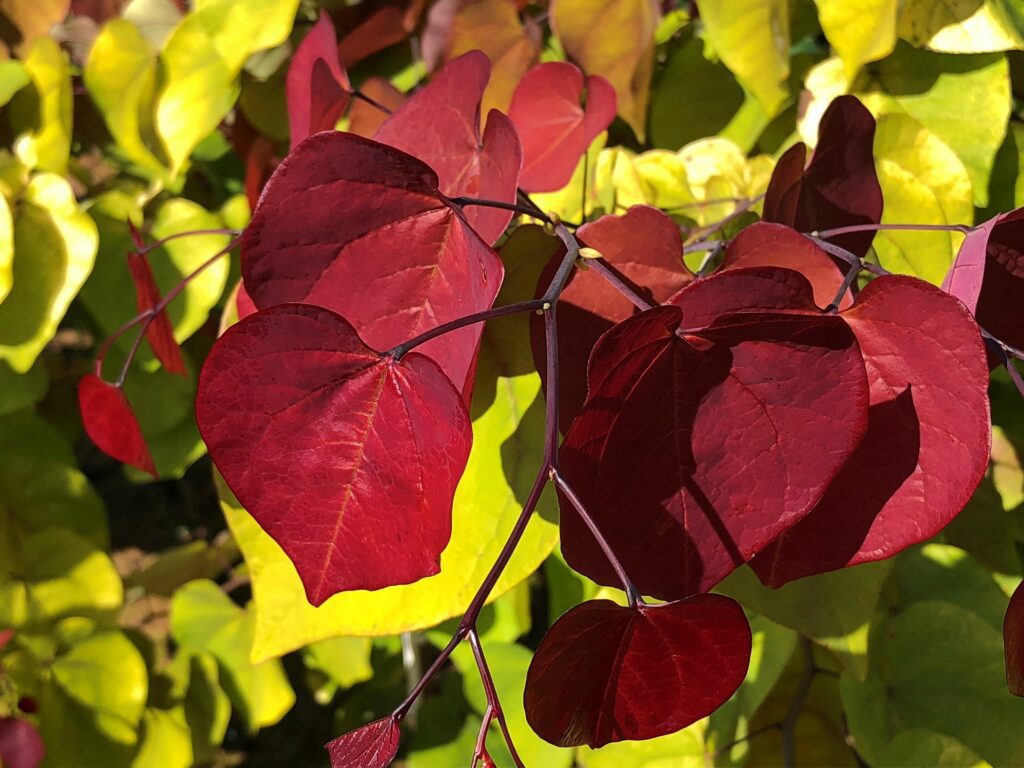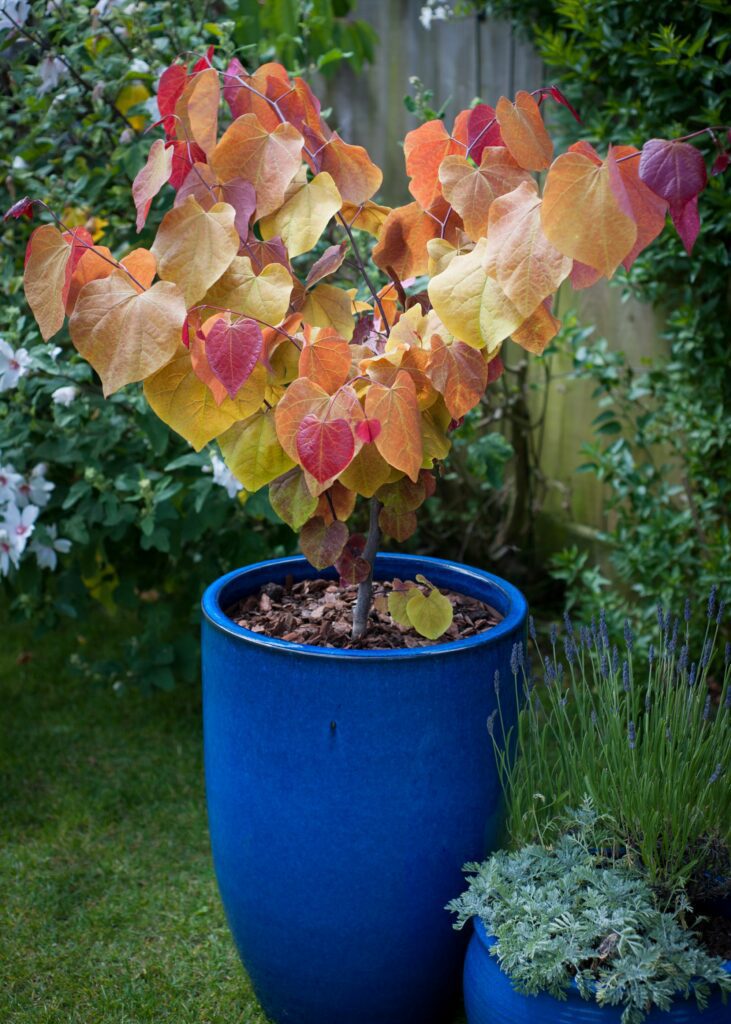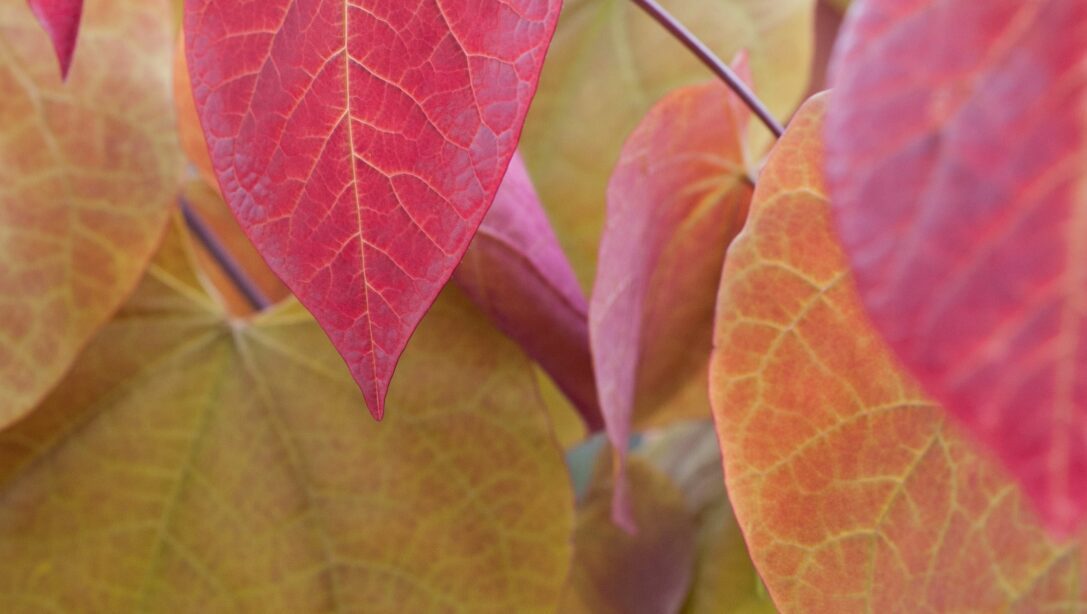Cercis x canadensis ‘Eternal Flame’ is a strikingly unusual variety, thanks to the unique colour of its foliage. The glossy, deep-red leaves gradually transform through orange to yellow shades, leaving the plant with a graduation of coloured leaves on each stem – a beautiful sight and transformation like no other.
Once the plant has had time to settle and mature in the garden, it will go on to produce dark pink flowers along the stems in mid-spring before the foliage appears. This given it an even longer season of interest from the April flowers to the array of foliage colours in May, followed by the attractive autumn foliage colours.
Growing to around 3-4 metres, this is ultimately a smallish tree that suits a wide range of gardens. It could equally be kept pruned and grown as a multi-stemmed shrub. As a tough, hardy plant, it will thrive happily in any sunny position in most soil types, whether in the garden or in a container on the patio. It is easy to care for, just needing a light pruning to keep its shape.
Fact File

| Flowering time | April to May (only flowers after reaching maturity) |
| Sun requirements | Full sun |
| Soil | Any free-draining soil |
| Hardiness | Fully hardy |
| Size | Grows to 3-4 metres high |
Growing Guide

Planting
Plant in any free-draining soil in the garden or in a container in a sunny position. Add plenty or organic matter to enrich the soil. Dig a hole that is as deep as the rootball, and approximately two to three times as wide. Place the plant in the hole, fill with a soil/organic matter mixture and water thoroughly.
Watering
Continue to water well until full established.
Pruning
Prune back lightly to shape after flowering.

Contemporary Planting Ideas
Cercis x canadensis ‘Eternal Flame’ can be grown as a specimen feature plant in a container on a patio.
It can also be positioned in the garden as a small tree and underplanted with shade-loving plants, such as brunnera, geraniums and pulmonaria.
Fact
This variety is the result of a highly skilled and technical breeding programme led by Dr. Dennis Werner at North Carolina State University. Across the course of many years, the programme has been looking at the genus and conducting in-depth scientific work to bring new colours, form and shapes.




